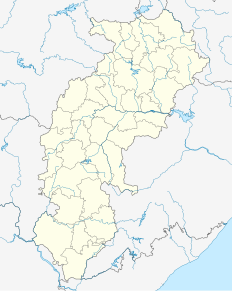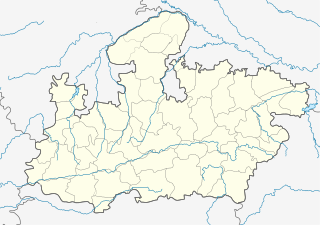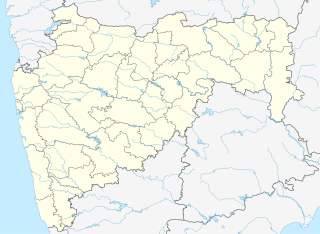
The South Wales Coalfield is a large region of south Wales that is rich in coal deposits, especially the South Wales Valleys. It supported a large part, but not all, of the coal industry in Wales.

Coal India Limited (CIL) is an Indian state-controlled coal mining company headquartered in Kolkata, West Bengal, India and the largest coal-producing company in the world and a Maharatna company.

Pocahontas Coalfield, which is also known as the Flat Top-Pocahontas Coalfield, is located in Mercer County/McDowell County, West Virginia and Tazewell County, Virginia. The earliest mining of coal in the coalfield was in Pocahontas, Virginia in 1883 at Pocahontas Mine No. 1, now on the National Register of Historic Places.

The Somerset Coalfield in northern Somerset, England is an area where coal was mined from the 15th century until 1973. It is part of a larger coalfield which stretched into southern Gloucestershire. The Somerset coalfield stretched from Cromhall in the north to the Mendip Hills in the south, and from Bath in the east to Nailsea in the west, a total area of about 240 square miles (622 km2). Most of the pits on the coalfield were concentrated in the Cam Brook, Wellow Brook and Nettlebridge Valleys and around Radstock and Farrington Gurney. The pits were grouped geographically, with clusters of pits close together working the same coal seams often under the same ownership. Many pits shared the trackways and tramways which connected them to the Somerset Coal Canal or railways for distribution.
The South Yorkshire Coalfield is so named from its position within Yorkshire. It covers most of South Yorkshire, West Yorkshire and a small part of North Yorkshire. The exposed coalfield outcrops in the Pennine foothills and dips under Permian rocks in the east. Its most famous coal seam is the Barnsley Bed. Coal has been mined from shallow seams and outcrops since medieval times and possibly earlier.
Coal mining in India began in 1774 when John Sumner and Suetonius Grant Heatly of the East India Company commenced commercial exploitation in the Raniganj Coalfield along the Western bank of Damodar river. Growth remained slow for nearly a century due to low demand. The introduction of steam locomotives in 1853 boosted demand, and coal production rose to an annual average of 1 million metric tons. India produced 6.12 million metric tons of coal per year by 1900 and 18 million metric tons per year by 1920. Coal production rose steadily over the next few decades, and was boosted by demand caused by World War I. Production slumped in the interwar period, but rose to 30 million metric tons by 1946 largely as a result of World War II.

South Africa produces in excess of 255 million tonnes of coal and consumes almost three quarters of that domestically. Around 77% of South Africa's energy needs are directly derived from coal and 92% of coal consumed on the African continent is produced in South Africa.

Coal mining in the United Kingdom dates back to Roman times and occurred in many different parts of the country. Britain's coalfields are associated with Northumberland and Durham, North and South Wales, Yorkshire, the Scottish Central Belt, Lancashire, Cumbria, the East and West Midlands and Kent. After 1970, coal mining quickly collapsed and practically disappeared in the 21st century. The consumption of coal – mostly for electricity – fell from 157 million tonnes in 1970 to 18 million tonnes in 2016. Of the coal mined, 77% of supplies were imported from Colombia, Russia and the United States. Of the coal mined in the UK in 2016 all was from open-cast coal mines. Employment in coal mines fell from a peak of 1,191,000 in 1920 to 695,000 in 1956, 247,000 in 1976, 44,000 in 1993, and to 2,000 in 2015.

The Manchester Coalfield is part of the South Lancashire Coalfield, the coal seams of which were laid down in the Carboniferous Period. Some easily accessible seams were worked on a small scale from the Middle Ages, and extensively from the beginning of the Industrial Revolution in the early 19th century until the last quarter of the 20th century. The Coal Measures lie above a bed of Millstone Grit and are interspersed with sandstones, mudstones, shales, and fireclays. The Lower Coal Measures occupy the high ground of the West Pennine Moors above Bolton and are not worked in the Manchester Coalfield. The most productive of the coal measures are the lower two thirds of the Middle Coal Measures where coal is mined from seams between the Worsley Four Foot and Arley mines. The deepest and most productive collieries were to the south of the coalfield. The coalfield is affected by the northwest to southeast aligned Pendleton Fault along the Irwell Valley and the Rossendale Anticline. The Coal Measures generally dip towards the south and west. Numerous other smaller faults affect the coalfield. The Upper Coal Measures are not worked in the Manchester Coalfield.
South Eastern Coalfields Limited (SECL) is the largest coal producing company of India. It is a "Miniratna" Company, and one of eight fully owned subsidiaries of Coal India Limited. The company has its headquarter at Bilaspur, Chhattisgarh, India and 92 mines spread over Chhattisgarh & Madhya Pradesh; 70 underground, 21 opencast, and 1 mixed. It is a schedule 'B' Mini Ratna CPSE in coal & lignite under the administrative control of Ministry of Coal
Eastern Coalfields Limited (ECL) is a coal producer based in India. The company was founded in 1975 after nationalisation of coal mines in India. It operates coalmines in Jharkhand and West Bengal states of India.It inherited all the private sector coal mines of the Raniganj Coalfield. It is one of the fully owned subsidiaries of Coal India Limited. The company has its headquarters at Sanctoria, in West Bengal.
Mahanadi Coalfields Limited (MCL) is one of the major coal producing company of India. It is one of the eight subsidiaries of Coal India Limited. Mahanadi Coalfields Limited was carved out of South Eastern Coalfields Limited in 1992 with its headquarters at Sambalpur. It has its coal mines spread across Odisha It has total seven open cast mines and three underground mines under its fold.
North Eastern Coalfields is a unit of Coal India Limited, which has its headquarters in Margherita in Assam. The unit came into existence in 1975 after nationalization of coal mines in India. It took over the private mines spread in North Eastern States of India and at present has mines operating in states of Assam, Meghalaya, Nagaland and Arunachal Pradesh. At present there are five working mines three underground and two opencast mines.

Raniganj Coalfield is primarily located in the Asansol and Durgapur subdivisions of Paschim Bardhaman district of West Bengal. It spreads over to the neighbouring districts of Birbhum, Bankura, Purulia and to Dhanbad district of Jharkhand.

Ib Valley Coalfield is located in Jharsuguda district in the Indian state of Odisha, in the valley of the Ib River, a tributary of the Mahanadi.
′

Korba Coalfield is located in Korba district in the Indian state of Chhattisgarh in the basin of the Hasdeo River, a tributary of the Mahanadi.

Sohagpur Coalfield is located in Shahdol district in the Indian state of Madhya Pradesh in the basin of the Son River. It is the biggest coalfield in the state of Madhya Pradesh.

Umaria Coalfield is located in Umaria district in the Indian state of Madhya Pradesh in the valley of the Umrer River, a tributary of the Son River.
Some of the more notable coal companies in Australia are the following:

Wardha Valley Coalfield is located mainly in Chandrapur district in the Vidarbha region of the Indian state of Maharashtra.











